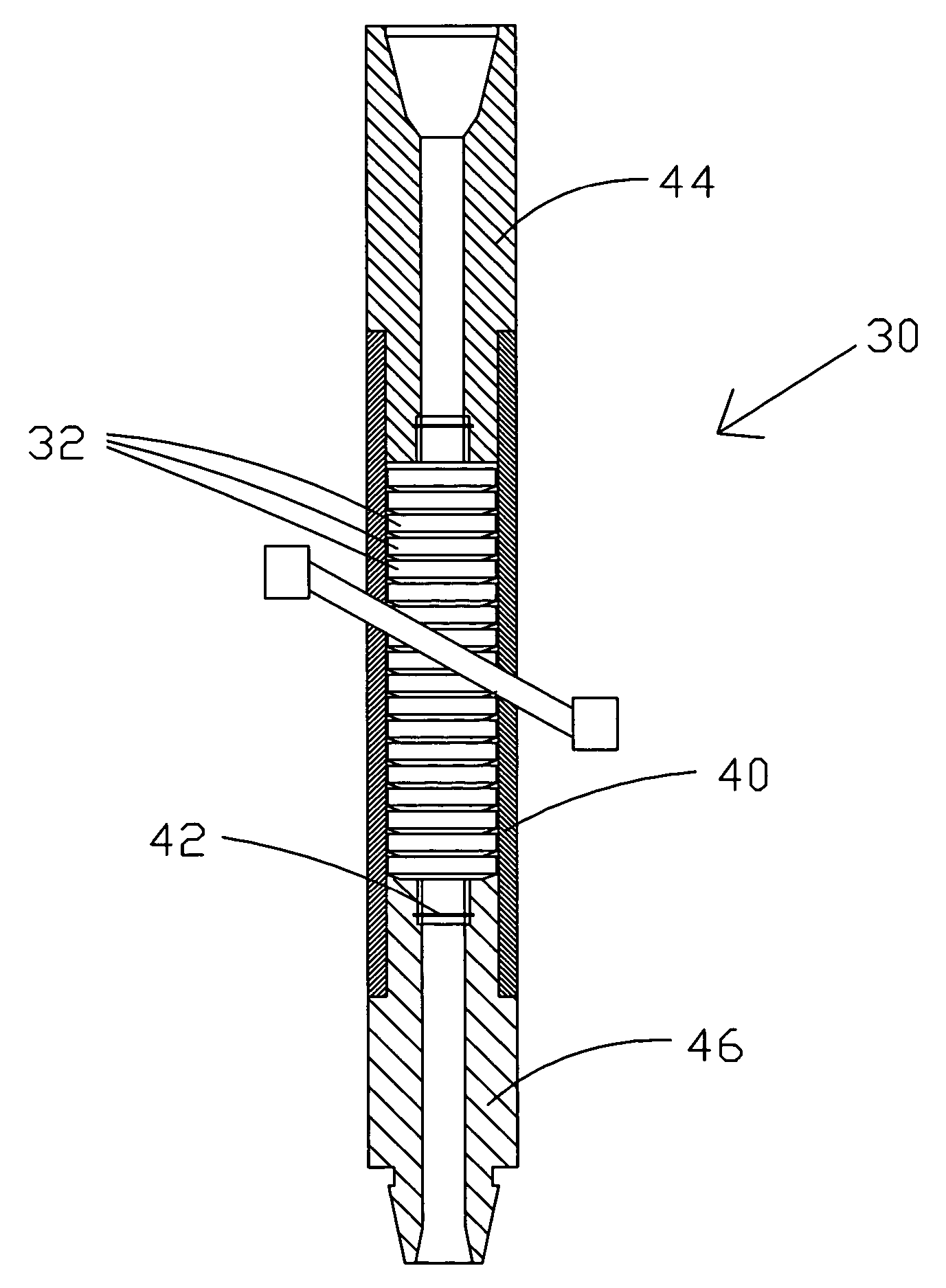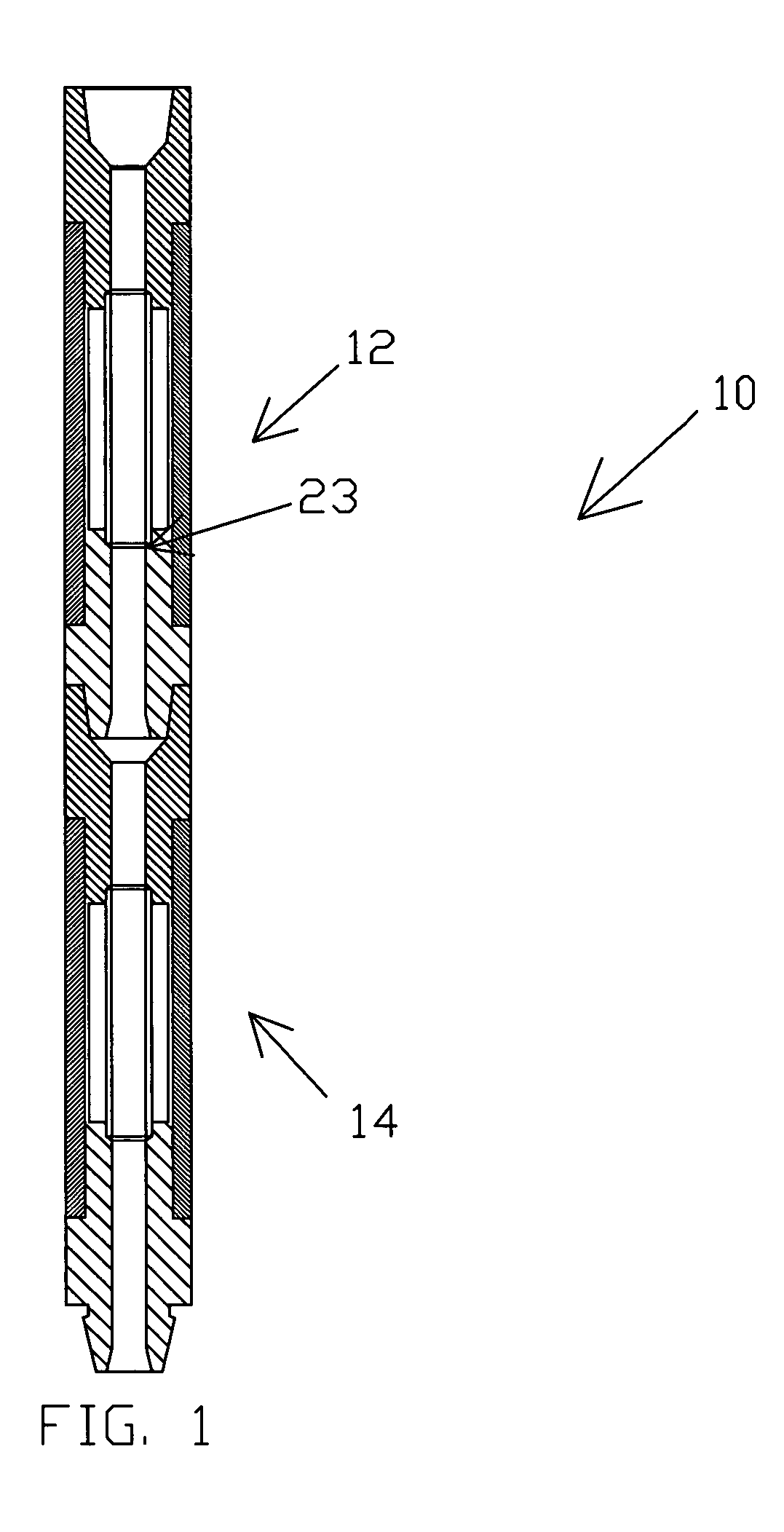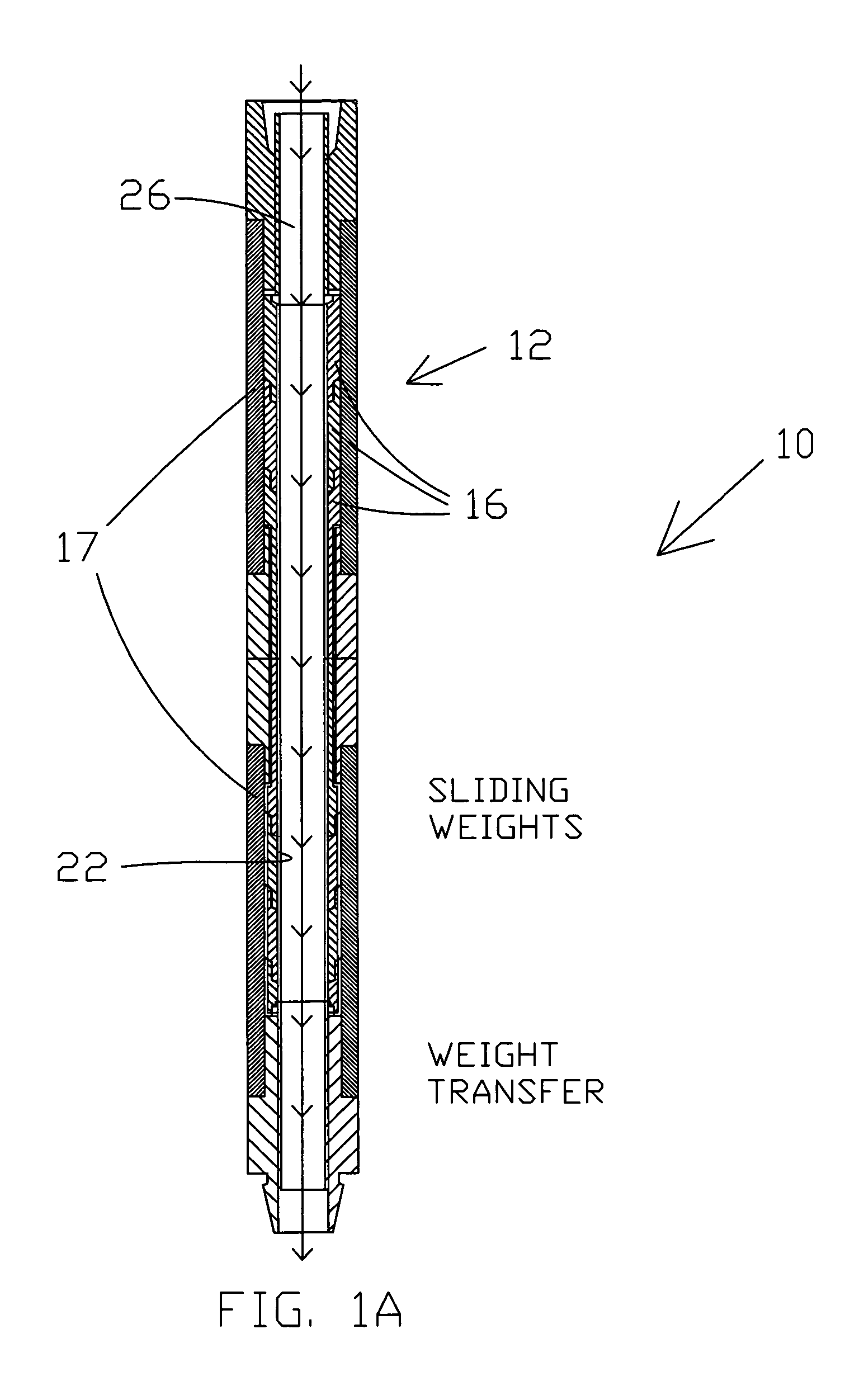Drilling assembly and method
a technology of assembly and drilling, which is applied in the direction of drilling casings, drilling pipes, borehole/well accessories, etc., can solve the problems of increasing the number of drill string trips, reducing the reliability of mwd, and reducing the amount of drilling, so as to increase the drilling rate of penetration, increase the amount of weight, and increase the drilling speed
- Summary
- Abstract
- Description
- Claims
- Application Information
AI Technical Summary
Benefits of technology
Problems solved by technology
Method used
Image
Examples
Embodiment Construction
[0078]Now referring to the drawings, and more particularly to FIG. 1, FIG. 1A, and FIG. 1B, there is shown an elevational view of one possible construction of a portion of a drilling assembly 10 which may be utilized in a drill string in accord with the present invention. Drilling assembly 10 may preferably be utilized as a portion of a bottom hole drilling assembly but may also be used elsewhere in the drill string as desired. In FIG. 1, upper section 12 and lower section 14 may be the same or may be significantly different in construction. Upper section 12 is connected to lower section 14 through sub 23. FIG. 1A shows one possible construction for upper heavy weight assembly 12 and FIG. 1B shows a possible construction for lower heavyweight assembly section 14.
[0079]In the particular embodiments shown in FIG. 1A and FIG. 1B, upper assembly portion 12 and lower assembly portion 14 function differently as discussed hereinafter and may be utilized separately or in conjunction with ea...
PUM
 Login to View More
Login to View More Abstract
Description
Claims
Application Information
 Login to View More
Login to View More - R&D
- Intellectual Property
- Life Sciences
- Materials
- Tech Scout
- Unparalleled Data Quality
- Higher Quality Content
- 60% Fewer Hallucinations
Browse by: Latest US Patents, China's latest patents, Technical Efficacy Thesaurus, Application Domain, Technology Topic, Popular Technical Reports.
© 2025 PatSnap. All rights reserved.Legal|Privacy policy|Modern Slavery Act Transparency Statement|Sitemap|About US| Contact US: help@patsnap.com



